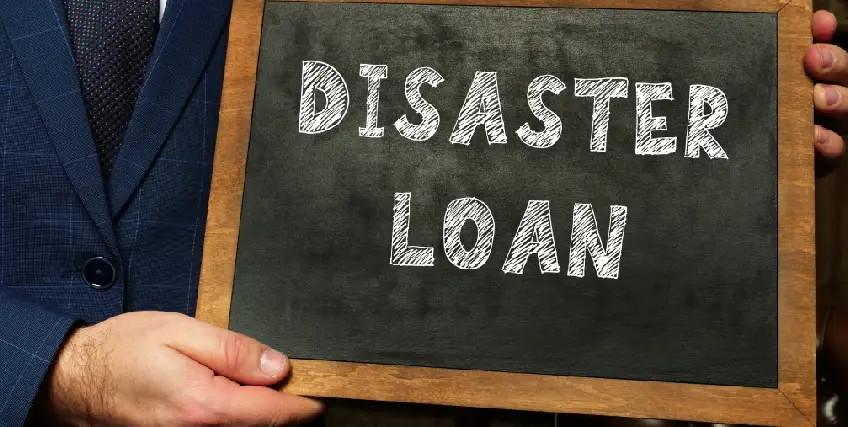How to Get Gas Station Financing in Texas in 5 Steps
January 07, 2025 | Last Updated on: January 08, 2025

Gas station financing is among the first steps to operating an essential service business. But becoming a gas station owner in Texas (among other states) isn’t as simple as getting a check and opening the doors.
Before you apply for financing — perhaps a business acquisition loan, if you’re aiming to buy an existing station — it’s critical to take some key steps. Building a sound business plan and understanding gas station financing requirements can get you on the road to successful business ownership.
1. Decide Whether to Buy into a Franchise or Go Independent
Going independent gives you more freedom to customize your business. For instance, you could develop additional revenue streams, including food, drinks, car washes, repairs and service — without fear of breaking a franchise’s rules of ownership.
With that said, buying a franchise is the simpler route to gas station financing, as lenders typically value the tried-and-true recipe of franchises.
Buying a franchise
Pros
- Likely be cheaper up front, as the infrastructure and equipment may be in place.
- Customers may already have “brand affinity,” or a long standing habit of buying gas at the station. As a result, you may not need an advertising budget.
- Could include a built-in support system: Troubleshooting can be done through the franchise.
Cons
- Franchise rules governing your business could limit your decision-making power.
- The payment of franchise fees (or the cost of ongoing support).
2. Establish a Business Plan
When applying for gas station financing in Texas (or anywhere else), it’s crucial to write an effective business plan. Think of it as an all-encompassing document: It will cover your business’s mission and goals as well as your industry background and skill set. But it will also account for the following factors:
Prices
Remember that gas station profits have a natural ceiling. As the price of gas goes up for customers, it’s going up for you — and vice versa.
Both scenarios – unusually high and unusually low prices – can be bad for business. If gas is too expensive, your customers may opt to drive less often. If gas is too inexpensive, you may not be generating enough revenue to turn a significant profit.
As part of your market research, you might consult experts on how the rise of hybrid and electric cars could affect pricing. If Texas is slower to adopt more fuel-efficient cars than, say, California, your business might have an extended runway.
Location
Location is key to pricing and, more broadly, the success of any gas station. If you’re located in a highly visible location to drivers — perhaps in a densely-populated neighborhood a stone’s throw from a freeway entrance, for example — you can charge a premium for convenience.
Similarly, if your potential location is more rural and you’d be catering to long-distance drivers, you might benefit from being close to a freeway exit.
Income streams
Gas stations can offer various secondary revenue streams. You can also sell food and beverages, tobacco products, household items, and memorabilia. Many gas stations have service sections or car washes as well.
Part of determining your ideal location (see above) means knowing what drivers need in your area. Then you can use that knowledge to create multiple reasons for them to come to your station versus a competitor’s.
Equipment
Whether you’re buying into a franchise or establishing a brand-new outfit, consider what comes with owning a gas station, such as:
- The tanks and pumps need to be inspected — in Texas, at least every two years.
- Your refrigerators need to be consistently running at the same temperature.
- A service truck needs to run perfectly.
If you have additional income streams, those may also involve additional equipment upkeep. That could be a car wash, service station or food-related equipment.
Bottom line: It’s vital that you keep your equipment in top shape and ready to perform. In a business with such thin margins, every moment your equipment can’t perform is lost money.
Read more: How to Budget for Gas Station Employee Turnover
3. Understand Gas Station Financing Requirements
Besides a business plan, lenders will want to review your:
- Credit score: If you haven’t yet established business credit, your personal credit history and score can help lenders understand how much debt you’ve taken on in the past, and how effectively you repaid it.
- Time in business: If you’re seeking to become a first-time gas station owner, you might find it difficult to qualify with lenders that require one to two years of operating time. You might instead zero in on lenders that specialize in startups or gas station financing, specifically.
- Down payment: Also casually known as cash requirements or equity injections, putting your own skin in the game could strengthen your loan application. Some lenders might even require this, particularly if you’re a first-time operator.
- Documentation: Expect to be asked for tax returns, bank statements, your business plan, and other records of your finances and business. Your business plan should forecast how you’ll afford your gas station financing repayment.
4. Narrow Your Business Financing Options
Because pricing fluctuates and margins can be thin, it’s particularly important that gas station owners have working capital available to ensure sufficient inventory of both gas and convenience items. That means you’re unlikely to be able to finance a gas station with a microloan.
Here are more realistic gas station financing options:
- Small Business Administration (SBA) loans are likely the best option for a more established owner looking to purchase or build a gas station. They’re the least expensive loans and tend to be the biggest (up to $5 million), giving you the most working capital. Because SBA loans are backed by the federal government, approved lenders can potentially give more favorable rates, knowing they’re less likely to lose money.
- Equipment loans could be an option if you’re purchasing an existing gas station. If the underground tanks holding the gasoline are old or outdated, you may need to replace them.
- Term loans are lump-sum, upfront financing that you repay in fixed installments, typically over a years-long term.
- Lines of credit might be more advantageous after you’ve acquired a gas station and perhaps have variable funding needs for renovations or improvements. Credit lines work like credit cards: You can withdraw funds up to an approved limit, and you only fork over interest on the amount you borrow.
- Commercial real estate loans could be useful to buy an existing gas station (and the land it sits on) or to finance new construction.
Read more: A Brief Guide To Gas Station Loans
5. Find Your Ideal Lender for Gas Station Financing
The no-brainer is to make sure your lender is licensed to operate in the state of Texas. Beyond that, it’s wise to cast a wide net. Include in your search financial institutions that you may already do business with. They might offer loyalty rewards, perhaps discounts.
It’s also smart to consider different types of lenders. Online lenders and marketplaces, for example, may have less stringent (and potentially higher interest rates) than slower-moving banks and credit unions.
Finally, prioritize lenders that offer pre-qualification. That’s the option to confirm your eligibility and check potential interest rates without commitment or impact to your credit.
FAQs About Gas Station Financing
What is a business acquisition loan as compared to other financing options?
Business acquisition loans can be used to buy (or “acquire”) a gas station (or other businesses). Other financing options may be used for working capital to grow or maintain a business.
What’s unique about gas station financing in Texas?
As one of the country’s largest and most populous states in the union, Texas has various urban, suburban, and rural areas with many drivers on the road. Local lenders compete with online financial institutions that may offer financing nationwide.
How do you apply for gas station financing?
Shop around and compare rates and terms with at least three lenders, including traditional banks, credit unions, and online lenders. Then, talk to a loan advisor at your preferred lender to fully understand their gas station financing requirements.
How are gas station financing requirements different from typical business financing eligibility criteria?
Your business plan should include details about your industry knowledge and experience. Plus, if you’re seeking funding to acquire a gas station, you might have to make up for lenders' "time in business" requirement by providing a sizable down payment.
What are alternative ways to finance gas station acquisitions?
You might also consider leveraging your own assets, a station seller’s financing options, and even crowdsourcing to raise needed funds.



